Your Guide Around the Lake-land, County Cavan
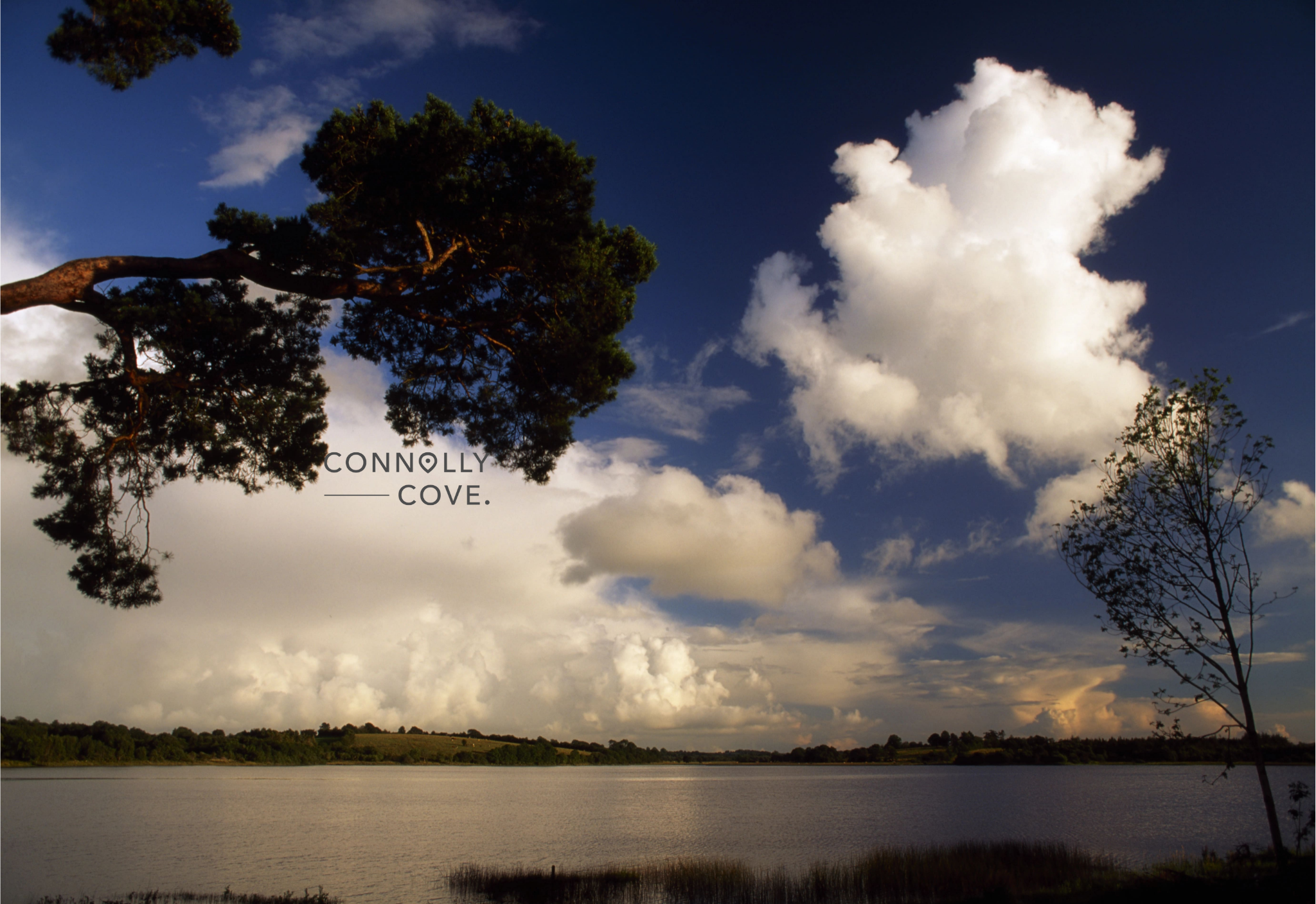
Updated On: April 21, 2024 by Ciaran Connolly
County Cavan, known as Lakeland County, is most famous for its numerous lakes. The meaning of ‘Cavan’ in the Gaelic language translates as ‘The Hallow’. Just like the days of the year, Cavan is home to 365 lakes, besides some significant rivers. These rivers include the source of River Shannon, the longest river in Ireland. For this reason, the County is prominent in water activities, including boat picnics and fishing.
Moreover, County Cavan is one of the places that hosts Sea Angling festivals continuously. However, it would be unfair to only care about the wet part of County Cavan as there is a lot more to discover about the place than the lakes and rivers.
The County has its share of contributing to history and art. Besides the breathtaking pathways through its eye-catching mountains and forest parks. So here is your guide through some of the most exciting spots around County Cavan.
Brief History of County Cavan
Most of what we know now about County Cavan was formed around 1579. However, the spot has been a dwelling for various peoples for ages and ages. This includes the pre-historic times, the Neolithic Age, the Celtic era, the Bronze Age, the Normans, and the ages of early Christianity. Like many of the surrounding regions, County Cavan has its share of building the history of Ireland.
Moreover, these periods and civilizations have contributed to the County Cavan we see now with many remarkable evidence and constructions. Even the last Ice Age has its share, as it shaped County Cavan’s winding hills and some of its lakes.
Further History
Originally known as ‘East Breifne’, County Cavan was supremacy under the rule of a famous Gaelic family, the O’Reilly’s. Around the twelfth century, the Normans started to take control of the area. Some remain today, like the motte and bailie castles, Clough Oughter Castle, and Casterahan.
In addition to the fortifications, we can find some remaining abbeys from this period, like Drumlane Abbey in Miltown and the abbey in Trinity Island. Most noteworthy, the doorway in Kilmore Cathedral is also remarkable evidence from the twelfth century in County Cavan.
Cavan Burren Park
Located at Cuilcagh Mountain, Cavan Burren Park is one of Ireland’s most beautiful topographies, which has survived since the pre-historic period. The park is standing on a limestone highland of around 295 meters. There are many exciting things to see in Cavan Burren Park, including the tree growings that go back to the 1950s.
Interestingly, the history of the park goes back millions of years ago. One of the geological contours of the park is the remaining riverbed. Also known as Giant’s Leap, and the correlated dolines and sinkholes towards the Lost Valley. Those lines and sinkholes are where the river drowned and vanished underground. This might give you an image of the park’s appearance in the pre-glacial age. This is one thing that makes Cavan Burren Park a unique destination where you can discover the secrets of the past ages. For those interested, trail two and three at the park give you a perfect view of the Giant’s leap.
More Interesting Things at the Park
Also, at the park, you’ll find plenty of megalithic tombs. This includes portal and wedge tombs from the Neolithic Period. Furthermore, Cavan Burren Park is home to many monumental things, including ancient lodges, walls, forts, graves, and prehistoric rocks.
Amazing Views on Offer
Another part of the park’s unique experience is that it offers a great view of other surrounding attractions. At Cavan Burren Park, you can view the Great Marble Arch Caves, Global Geopark and Cuilcagh Mountain. The park also offers different facilities, including parking spots, toilets, and picnic spots. There is also an interpretation of important geological and archaeological spots to help you better understand what you see there, besides five walking trails around the park.
Five different trails at Caven Burren Park help you get access to the different attractions:
- 1st Trail: Offers access to The Calf-House Dolmen Trail (this train has multi-access).
- 2nd Trail: Offers access to The river bed (Giant’s Leap).
- 3rd Trail: Offers access to The Promontory Fort.
- 4th Trail: The Tullygobbin Lough Trail starts from the lower end of the car park.
- 5th Trail: That’s the Cavan Way Trail. It leads to the Waymarked Way (26km) route, which enters Cavan Burren Park on Trail 2.
Shannon Pot
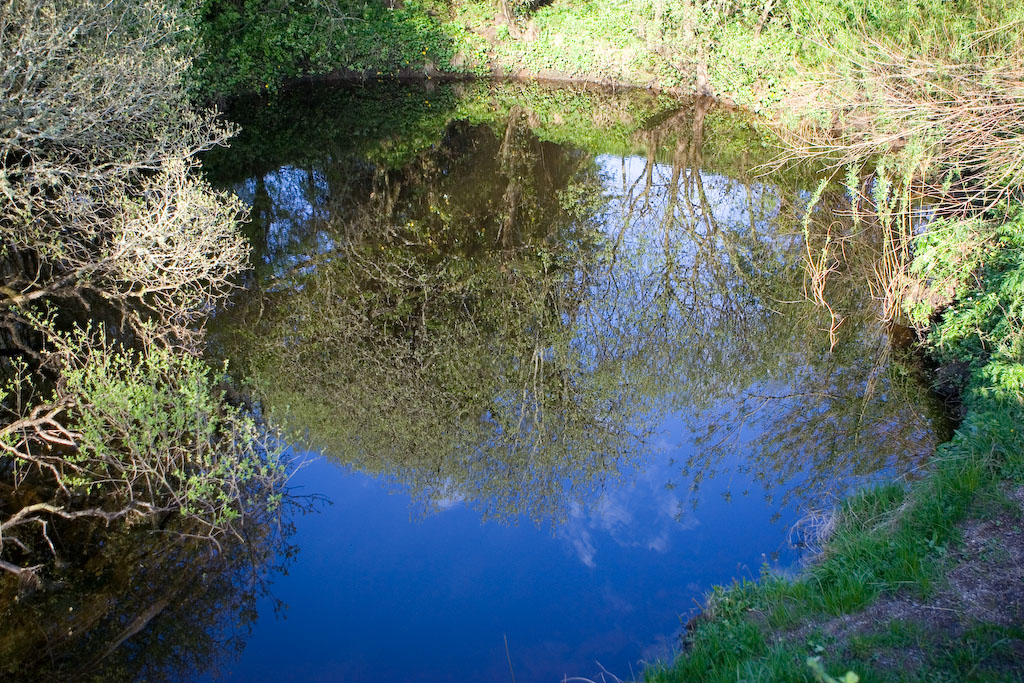
Shannon Pot, also known as Legnashina, is a very significant natural pool in the karst landscape in County Cavan. The Irish translation of Shannon Pot is “Lag na Sionna,” which means “hollow of the Shannon” in English. Legend has it that the name Shannon comes from “Sionnan”. Sionnan is the granddaughter of Manannán mac Lir, the God of the Sea or the son of the Sea in the Irish myths.
Tree of Knowledge
According to the stories, Sionnan went to where the Shannon is now to eat from the “Tree of Knowledge,” cultivated by the druids (Religious and political superiors in Celtic cultures). As Sionnan started eating the forbidden fruit, water from the pool rose and covered her. Therefore, she got dragged down to the pool, and the water covered the land, creating the Shannon River.
The Pot is one of the spots around County Cavan worth visiting. It might look small, but it’s deep. The pot is being supplied with water from a creek in the underground. The cool part is that this tiny pool is the source of Ireland’s longest river, the River Shannon! As a recommendation, the spot is perfect for a group picnic, especially when the weather is suitable for a day out.
Clough Oughter Castle
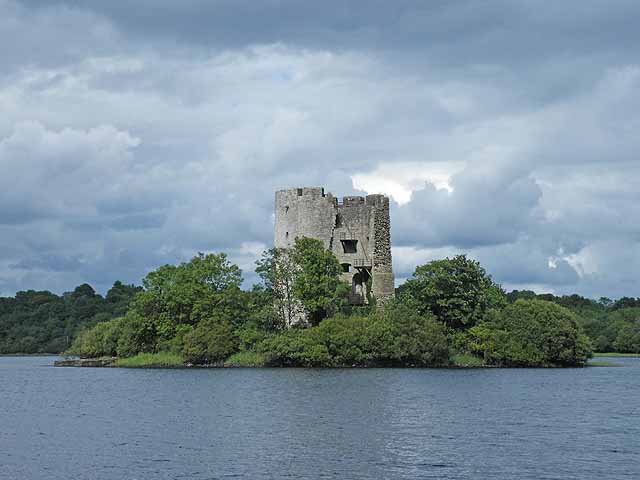
Constructed in the 13th century by the Anglo-Normans (specifically the de Lacy family), Clough Oughter Castle is a witness of the Middle Ages, standing on an island in the heart of the water of County Cavan. The Anglo-Normans built the castle while trying to invade the area where County Cavan is now located. After a while, the O’Reilys (the Irish leaders who constructed county Cavan), took over the castle till the 16th century.
From a Prison to an Imperial Castle
Most noteworthy is that the castle was significant, being a fort and a prison. A prison is on an island in the middle of the water. It seems like the Azkaban prison from Harry Potter kind of existed in real life, ha?! At the beginning of the 17th century, Clough Oughter Castle transformed from a prison to an imperial castle. The castle again returned to being a prison during the Irish rebellion when they used it to imprison the captivated officers. One of the famous people who was held as a prisoner in the castle was Bishop Bedell, an Anglican churchman who was imprisoned there till he died.
Design of the Castle
As for the construction, the castle is a high circular fortress on a man-created island. The castle is considered a gigantic creation because it has remained standing for hundreds and hundreds of years, although it was strongly damaged around 1653. Reaching Clough Oughter Castle is another fun and unique experience as it’s only accessible by boat, and it’s recommended.
Dun A Ri Forest Park
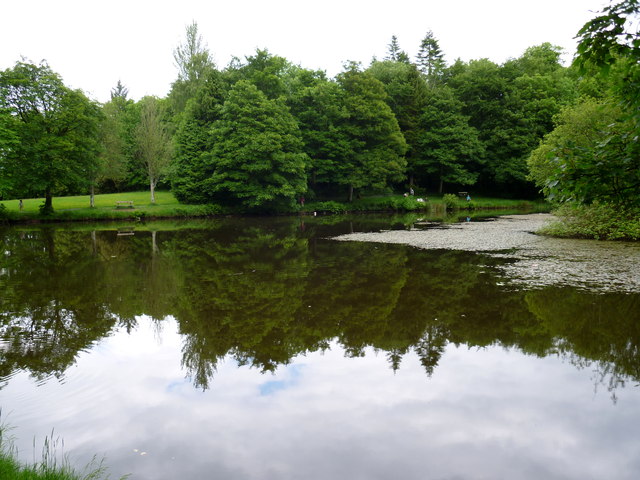
Located on Ireland’s County Monaghan and Cavan border, Dun A Ri Forest Park is one of the most significant spots for unique trails. The Dun A Ri was before a part of the Cabra Estate. A part of the park’s fame is the legends and stories known about it. As the legend goes, the park dates back to Cuchullain’s time. Cuchullain is a Gaelic fighter and it’s said that he was killed and buried in the lands of Dun A Ri during one of his fights.
Besides the park’s fame, one can visit to enjoy nature pathways, river and village strolls. Moreover, the forest park is a magnificent wildlife sanctuary as it hosts different animals, including mice, rabbits, squirrels, foxes, stoats, trouts, otters, minks, hedgehogs, and even salmon and trout fish as well as different kinds of birds. As for trees and greeneries, Dun A Ri has plenty of ash, oak, hazel trees, and rhododendron trees.
Killykeen Forest Park
Extending for 12 kilometres, Killykeen is another Forest Park in County Cavan that’s worth visiting. While strolling around the Forest Park, you’ll enjoy the view of unique birdlife and different animals, including foxes, stoats, hedgehogs, and grey squirrels. Many excellent natural trails can lead you to the strands of Lough Oughter Lake to enjoy the fantastic view of Clough Oughter Castle, which lies in the heart of the water. The shores of Lough Oughter are not the only place to enjoy the view of Clough Oughter. The park’s trails provide fantastic castle scenery as well.
In addition to the uniquely constructed Castle, the Gartnanoul Court Tomb is another significant attraction in Killykeen Forest Park. The spot is perfect for various activities, including windsurfing, biking, and canoeing. Moreover, the area has several trees, including Oak, Ash, and Beech. With all the lake complexes, woodlands, unique attractions, wildlife, and birdlife, Killykeen Forest Park is another excellent place to visit in County Cavan.
Cavan County Museum
If you’re into history, this will be a pleasant experience for you. County Cavan Museum is home to thousands of items that tell different stories about the County’s history. The museum is standing in a big area with many lakes and drumlins. Most noteworthy, the building of the County Cavan Museum goes back to the 19th century, as it was originally a monastery of St Clare.
What to See at Cavan County Museum
Coffee lovers! The museum has a coffee place for you to get a pleasant coffee break. For souvenirs and tokens, you’ll find several craft shops there as well. In addition to all of this, there are a number of workshops at the museum aiming to educate different students about various incidents including WWI.
Explore the Irish Folkloric Music in the Hallow
You might wonder how you will spend the night in County Cavan! Every country usually has unique traditions and folklore; this includes folk music. In Ireland, spending your night in a regional pub is a prevalent activity around the city. Small music sessions, known as Traditional Music Sessions, are top-rated. As well as being very enjoyable.
During these sessions, artists gather up in one of the local pubs to play and enjoy a night of traditional Irish music. One remarkable thing about these nights is that they introduce you to different types of music. As well as the experience of other musicians playing and improvising together.
Sessions take place in many pubs around County Cavan, including Mary Brady’s, Dickie’s, The Shamrock Bar, McCaul’s, The Farnham Arms, and Healey’s. Ensure you arrive around 9:30 pm so you don’t miss the show! It is great fun!
St Fethlimidh’s Cathedral, Kilmore
The Special Romanesque Doorway
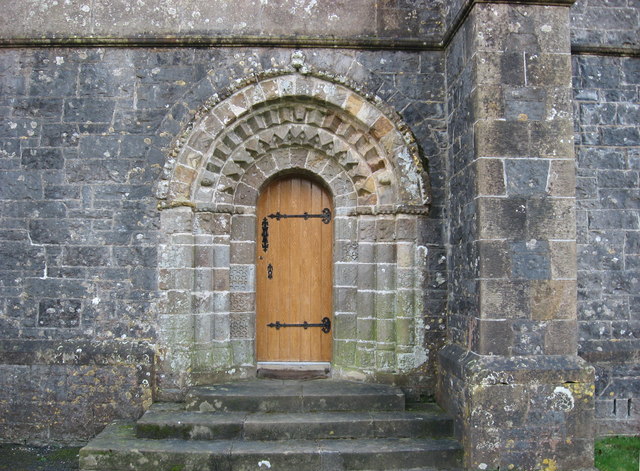
The door was added to the north wall of St. Fethlimidh’s Cathedral. Some stories say that the door belonged to an abbey on Trinity Island. Some people also believe the door belonged earlier to another church before it was moved to Trinity Island. Adorned chevrons and animal heads characterise the decoration of the doorway.
Castle Saunderson
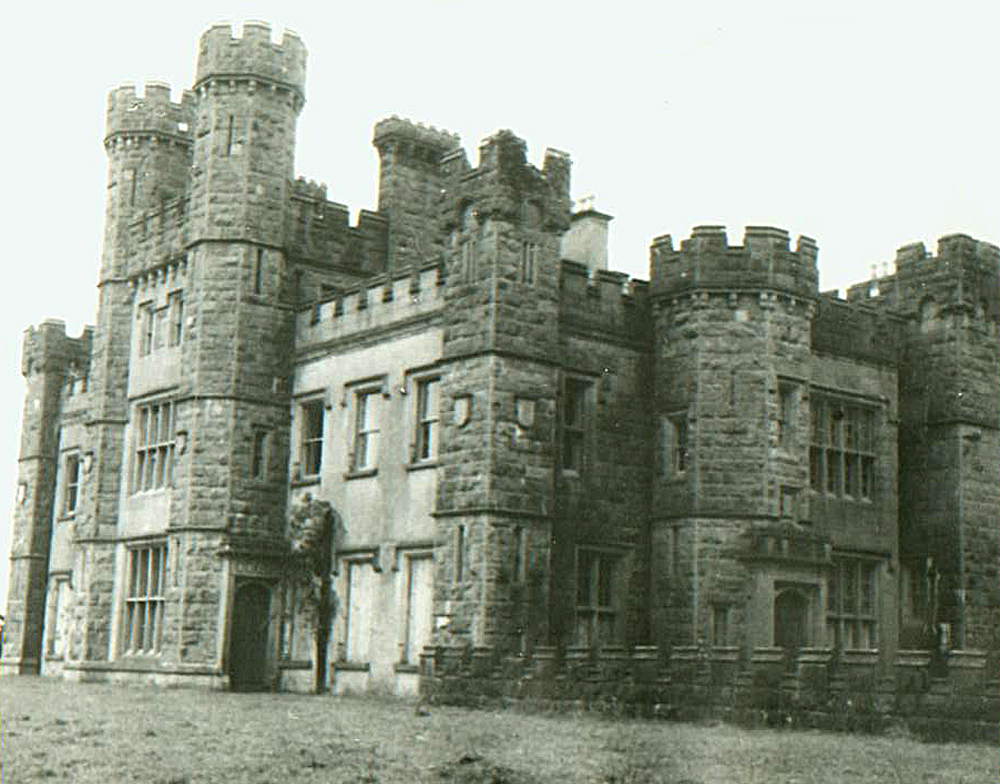
Constructed in 1840, Castle Saunderson is a vast palace located on the frontier between County Cavan and County Fermanagh. The castle-style mansion was built with an architectural design of both Tudore-Revival and baronial styles.
Castle Saunderson has much in common with Castle Crom in County Fermanagh, which also stands a few miles away. The palace has many Gothic characteristics and an impressive entrance. Most noteworthy, an extraordinarily prolonged gatehouse at the Castle has an entrance to the side.
The Castle was a dweller to The Saunderson family till 1977; after that, it was sold to a businessman who lives in London. At some point, the mansion reached a point of abandonment and desperation. Some tried to restore the castle to become a private mansion, but all trials went in vain.
More History Surrounding Castle Saunderson
In 1990, the castle was sold again to become a hotel, but all trials went in vain after being burnt and ruined. This wasn’t the first time the castle was destroyed by fire; it was the third time in its history that fire damaged it.
By 1997, the castle was sold for around half its market price to “Scouting Ireland” to become a scouting spot and a youth development and training centre. The mansion has a variety of grass, trees, lakes and water areas.
A Historic Church
A church inside the castle is considered significant, especially to the Saunderson’s. Around the church is a cemetery, and below it is a burial room with remnants of the Saunderson family. The church and the cemetery are being maintained as they’re considered a cultural heritage. Both in and around the castle are perfect spots for enjoyable walks, besides being a place for scouting and youth development.
Cabra Castle
Standing on the borders between County Cavan and County Monaghan, Cabra Castle was originally a property of the O’Reilly family till the 17th century. After being taken from the O’Reilly’s, Cabra Castle was taken over by many families until it reached the Pratt family’s hands and remained their property.
Cabra Castle is a stunning 4-star hotel combining both the old medieval spirit and the modern one. With the elegant furnishing and the friendly environment, the experience of spending a few days at the castle is worth it.
Opening Times of Castle
Furthermore, Cabra Castle is open to the public all year round from 11 am to 4 pm. (Except for the 24th, 25th, and 26th of December). While here, you can enjoy and explore the secrets of historical construction and architectural excellence.
For those dreaming about a unique medieval-themed wedding, Cabra Castle is among the best venus in Ireland for special occasions like weddings. So, there is no need to have second thoughts! It would be best if you had no better place for your significant occasion than Cabra Castle.
Round Tower
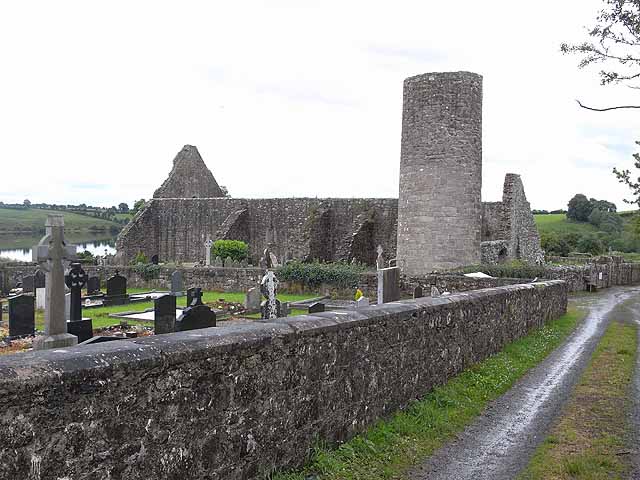
Constructed in 555 AD, the Round Tower on this site is the only remaining tower in the area. In the beginning, the tower was built of wood. In the 12th century, wood was substituted with stone with the supervision of Augustinian monks.
Round Towers were a very significant construction in the time between the 5th and 13th centuries. Round towers were known to have a Christian radix. And were built to serve as a shelter for essential objects and manuscripts during times of threat. Another part of the tower’s significance is its construction. Seeing an old tall building in a historical area will grab your attention, right?!
Saint Mouge
Many stories and legends are being told about Saint Mogue and the Drumlane. Stories say that St. Mogues’ parents came to Drumlane, where they had a seeing, predicting their son’s sacred position in the future. Some people believe Saint Mogue was the one who found Drumlane Abbey, but that might be wrong. Even though Saint Mogue spends lots and lots of his days as a young man and as an old man at the Drumlane.
The Sacred Well of Saint Mogue
One mile (in Derrintinny) away from Drumlane Abbey lies the Sacred Well of Saint Mogue. Next to the well is a flagstone commonly believed to have a mark of Saint Mogue’s knees. The imprint on the stone is called “Slun Maedoc”. Interestingly, a few miles away (specifically in Kilnacross) stands another sacred Well devoted to Sain Mogue.
A Perfect County in Ireland
In addition to the perfect, County Cavan has plenty of secrets to unravel about Ireland’s history and tradition. From big chains to local stores and gift shops, luxurious modern hotels to old authentic ones. From big streets to narrow historical ones, the County combines the elements of perfection in one place.
356 days of the year with 365 different lakes in one county, another thing that makes it worth visiting. In addition to all the previous temptations, the historic part and the traditional artistic evenings where you can grab something to eat and enjoy the Irish traditional music is another essential activity for a complete experience. With all these things gathering together in one place, County Cavan should be at the top of your list.
Worthy reads about places in Ireland:
The Beauty of County Kerry| All you need to know about County Laois| County Armagh: Home to Northern Ireland’s Most Worthy Sites|Getting around County Antrim| The Amazing Giants Causeway| Clare and the Irish Wonder of the Atlantic|






